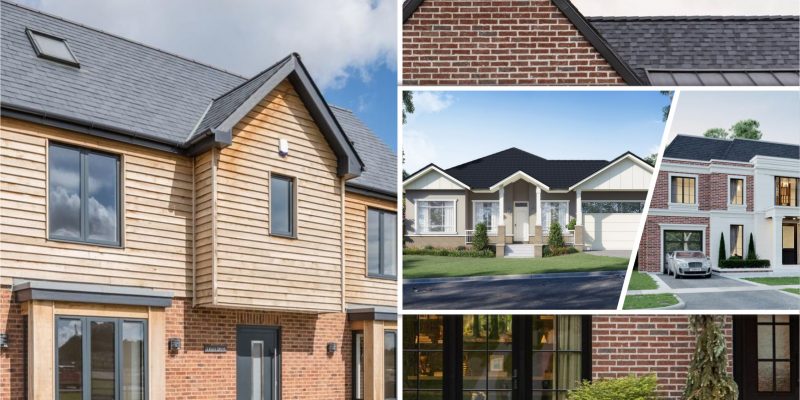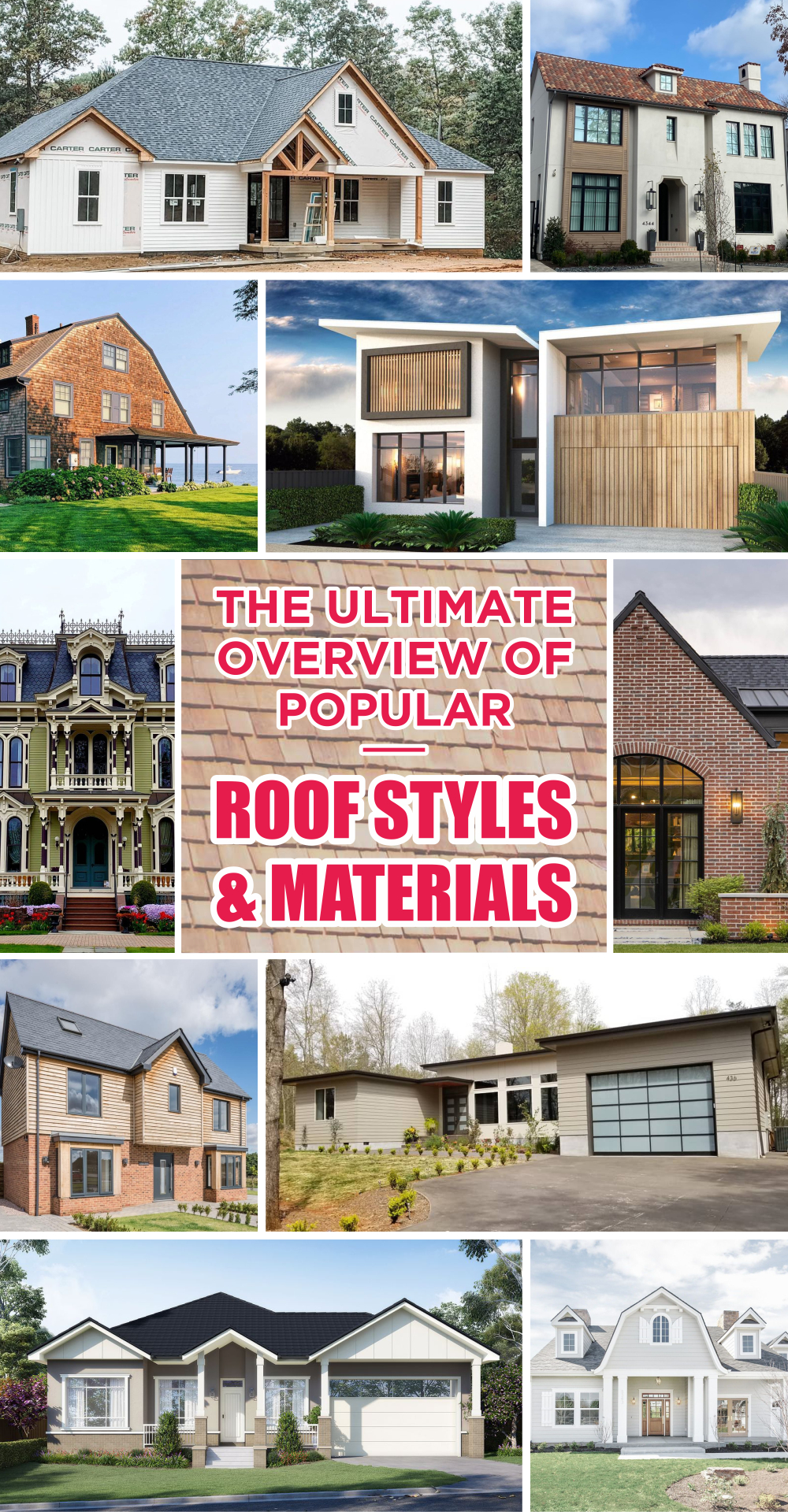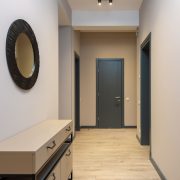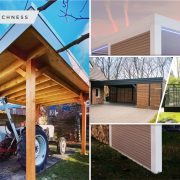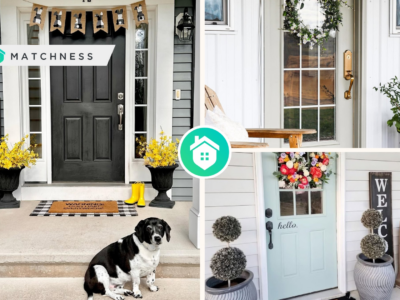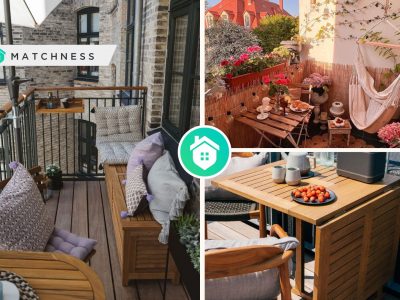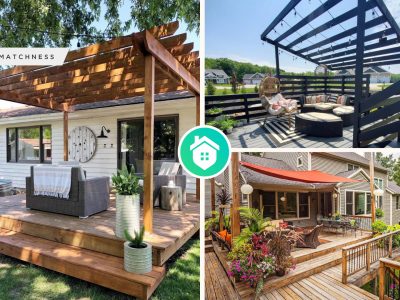While a roof may not immediately catch your attention, it conveys a lot about a home’s style and is an integral component of its structure and exterior appearance. To assist you in selecting the ideal roof design for your home, explore various roof types and materials in this tour of housetops that includes detailed explanations. When you’ve found the best one for your house, then you can contact a trusted contractor such as Minnesota roofing contractor.
Gable Roof Design
A gable roof is a type of roof design that features two sloping sides that meet at a ridge or peak, forming a triangular shape. It is one of the most common roof designs and is often seen in residential homes, as well as commercial and industrial buildings. The steep pitch of the gable roof allows for effective water drainage and provides attic space for storage or living. Additionally, the simple and symmetrical design of the gable roof makes it easy to construct and cost-effective.
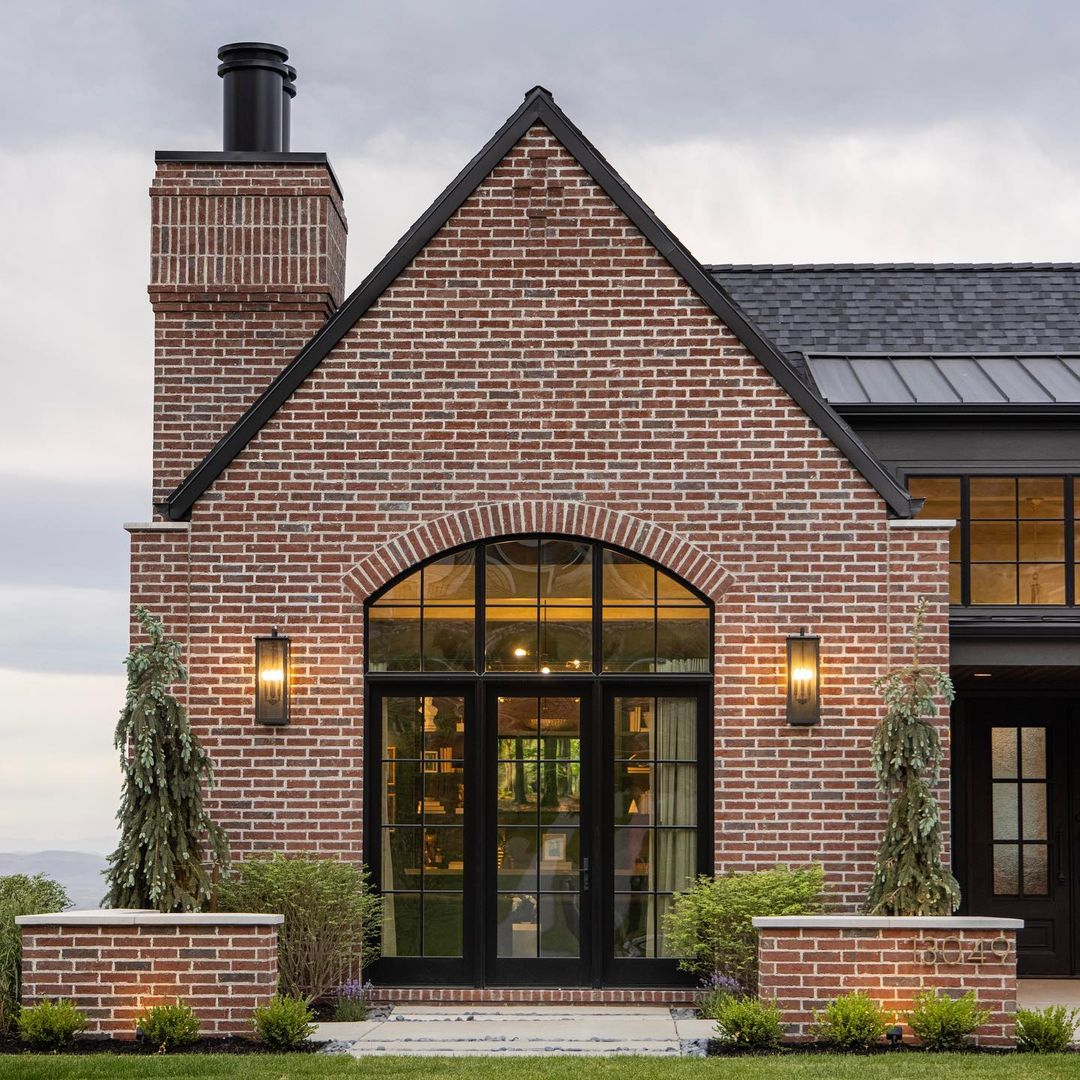
A gable roof consists of two parts whose upper horizontal edges meet to form a ridge. The most common roof form in cold or temperate climates, is made of rafters, roof trusses, or curtains. In addition, the simple and symmetrical design of the gable roof makes it easy to build and cost effective. Gable Roof Design from @hebdonstudios
Gable Roof Styles
Ranch-style homes often feature gable roofs with a gradual slope, which helps to reduce their prominence from the street. When selecting roofing materials, it’s advisable to opt for colors and textures that harmonize with the siding. For instance, the cedar-shingle siding of this house has a textured and subdued appearance, which is nicely enhanced by the gray-brown shingles on the roof.

A sloping gable roof is usually used on ranch-style houses so that the roof is less visible from the road. The rough texture and muted color of the cedar shingles in this home are complemented by the gray-brown shingle roof. Gable Roof Style from @kristina.roy

The style of gable roof has a color and texture that blends well with the walls. Gable Roof and Colonial Style Windows from @newsouth_homes
Hip Roof Design
Hip roofs are prevalent in modern home design and are characterized by four sides that slope upwards to create a ridge or peak at the top. This roof design is frequently paired with additional elements like dormer windows, which provide more storage or living space beneath the roof. It is common in areas with high winds or hurricanes because it is more aerodynamic.
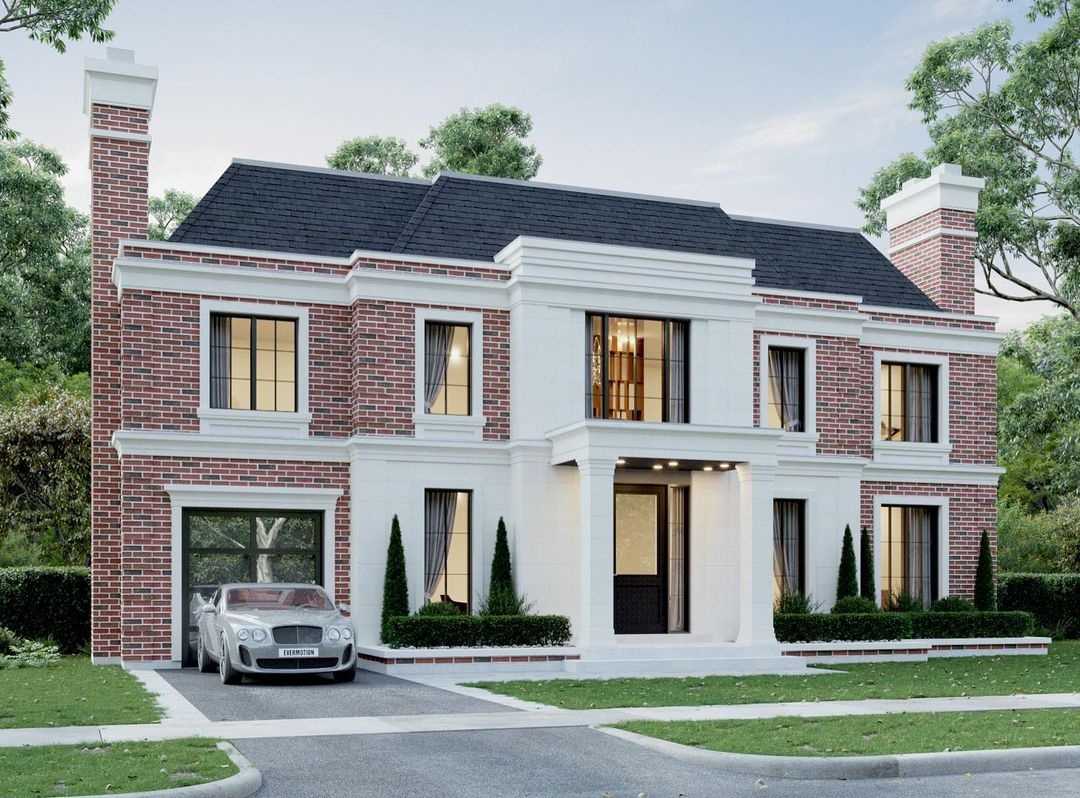
Hip roofs are one of the most common roof styles you see in homes today. This roof shape features four sloping sides that come together to form a crest or ridge along the top. Hip Roof Design from @sakoradesign
Dormer Roof Designs
A dormer is a type of window that protrudes from the slanted surface of a roof, with its own roof that may be sloping, arched, or flat. Including dormer windows in your roof design can introduce natural light and ventilation to the upper levels of a house, while also bringing an element of visual appeal and depth to the roofline.
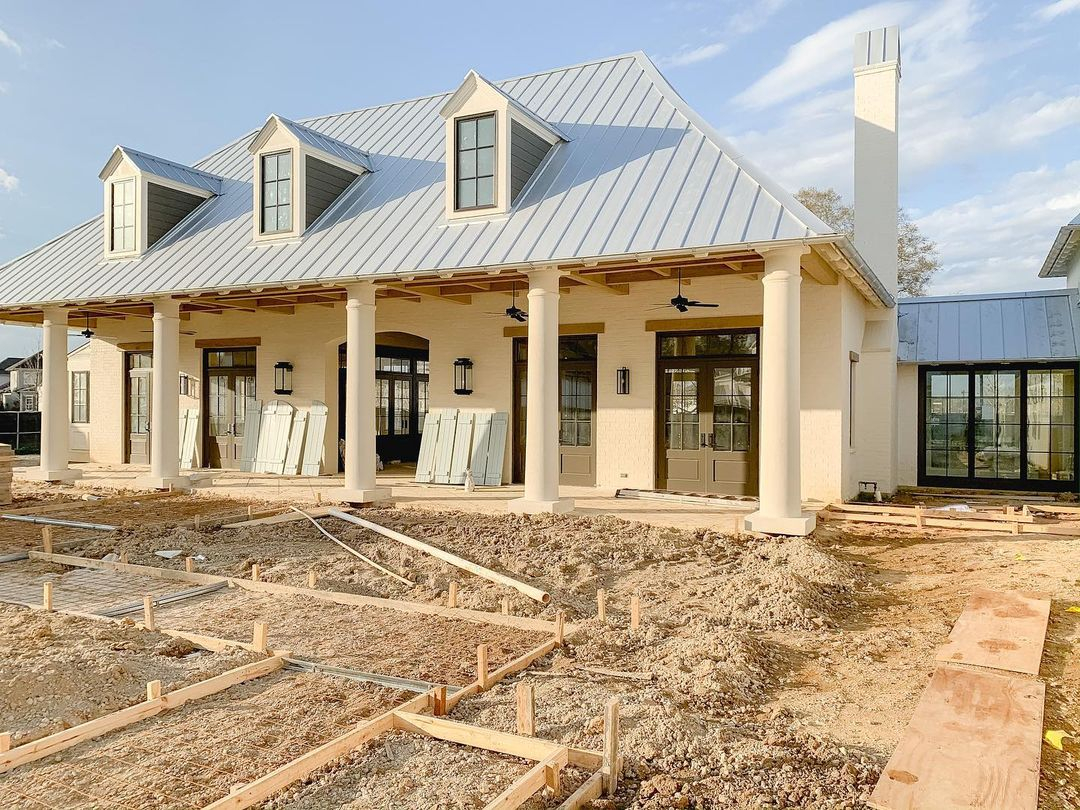
Incorporating skylights into your roof design allows natural light and airflow to the upper areas of the house while adding interest and dimension to the roofline. Dormer Roof Designs from @carterhillconstruction
Gambrel Roof Style
A gambrel roof is a type of roof style that has two slopes on each side, with the lower slope being steeper than the upper slope. The design creates more headroom and usable space in the upper levels of a building, making it a popular choice for barns and other agricultural buildings. Gambrel roofs are also commonly used in residential homes, especially in Dutch colonial-style houses. The symmetrical and curved shape of the gambrel roof offers an aesthetically pleasing and distinctive appearance to a home or building.
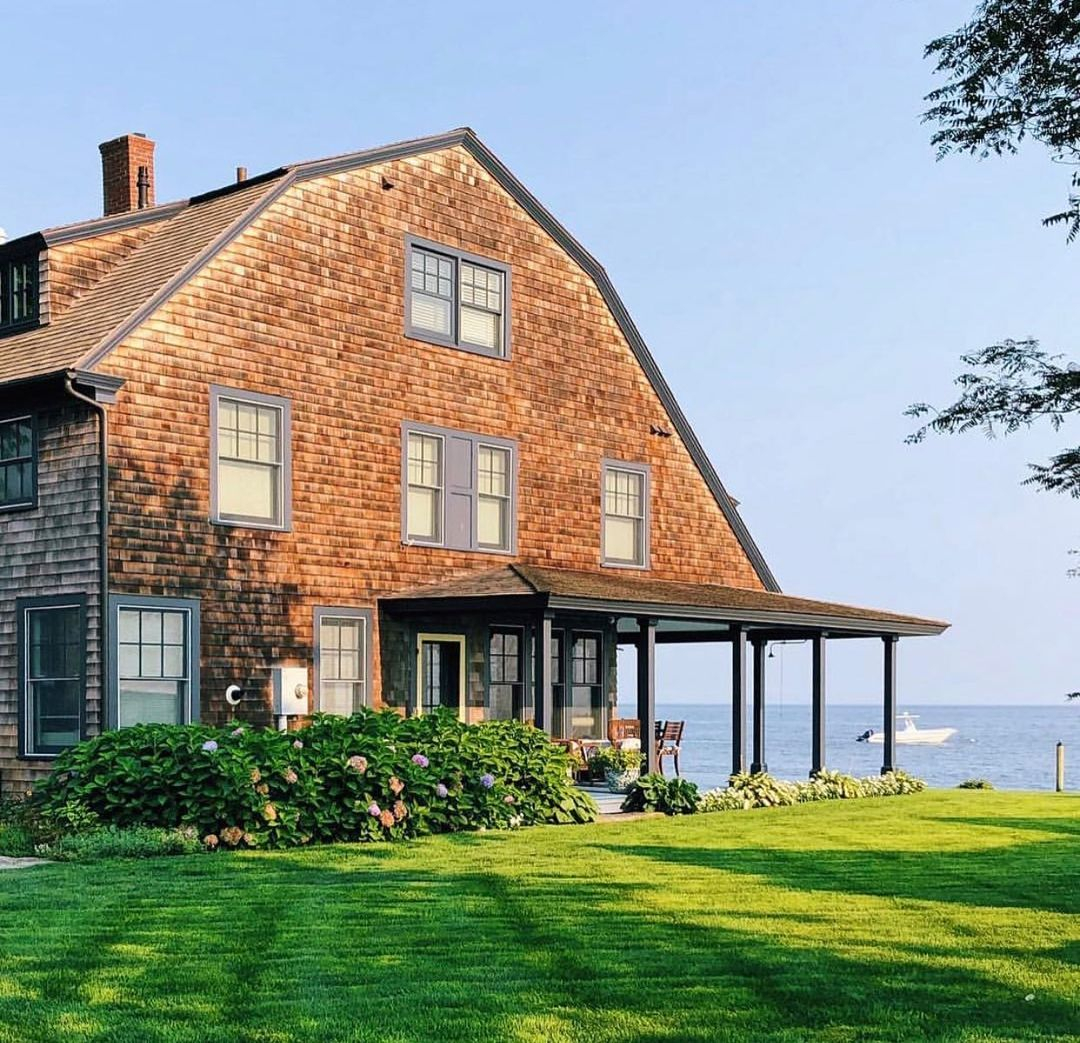
The symmetrical and curved shape of the gambrel roof offers an aesthetic and distinctive appearance to a house or building. Combined with a brick accent wall, it offers an attractive home design and rustic feel to the entire home. Gambrel Roof Shingle Style from @tomkligerman
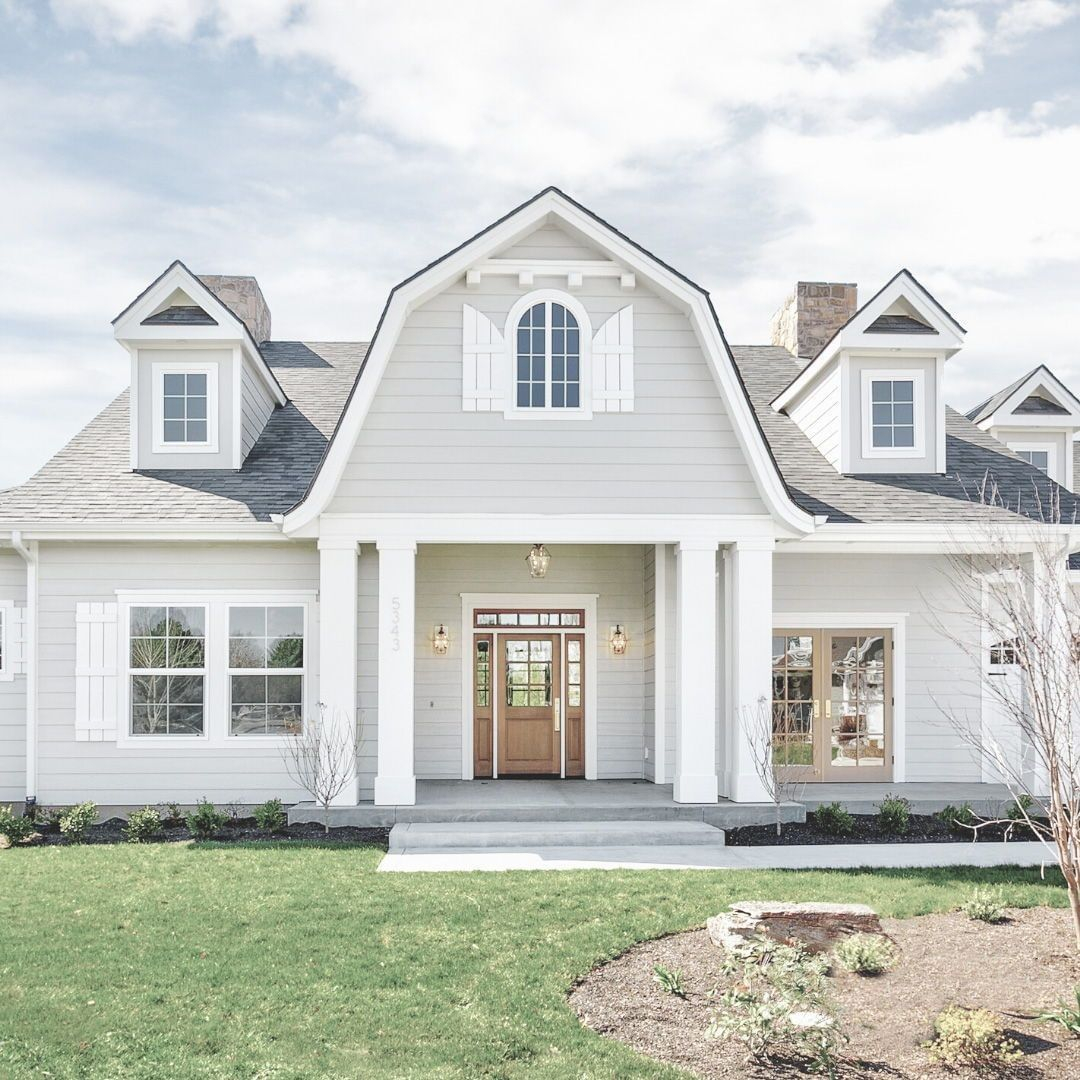
The gambrel roof slopes downward symmetrically on two sides. This roof style was common on Dutch Colonial homes, farmhouses, and exterior buildings such as barns and sheds. Depending on other architectural features, gambrel roofs can create a rustic feel or a more elegant appearance. Gambrel Roof Style from @clarkandcohomes
Mansard Roof Style
A mansard roof, which has been a popular roofing style in Europe for many centuries, is defined by its four sides that slope downwards, with each side having two slopes. At the top, these sides meet to form either a flat area or a low-pitched ridge. To bring natural light into the interior of the structure, dormers are often installed on the lower slope of the roof. This elegant home was originally built in the Federal style, but many of the improvements made post-Civil War were retained, including the mansard roof. The home’s decorative ornamentation is complemented by purple-gray scalloped shingles.
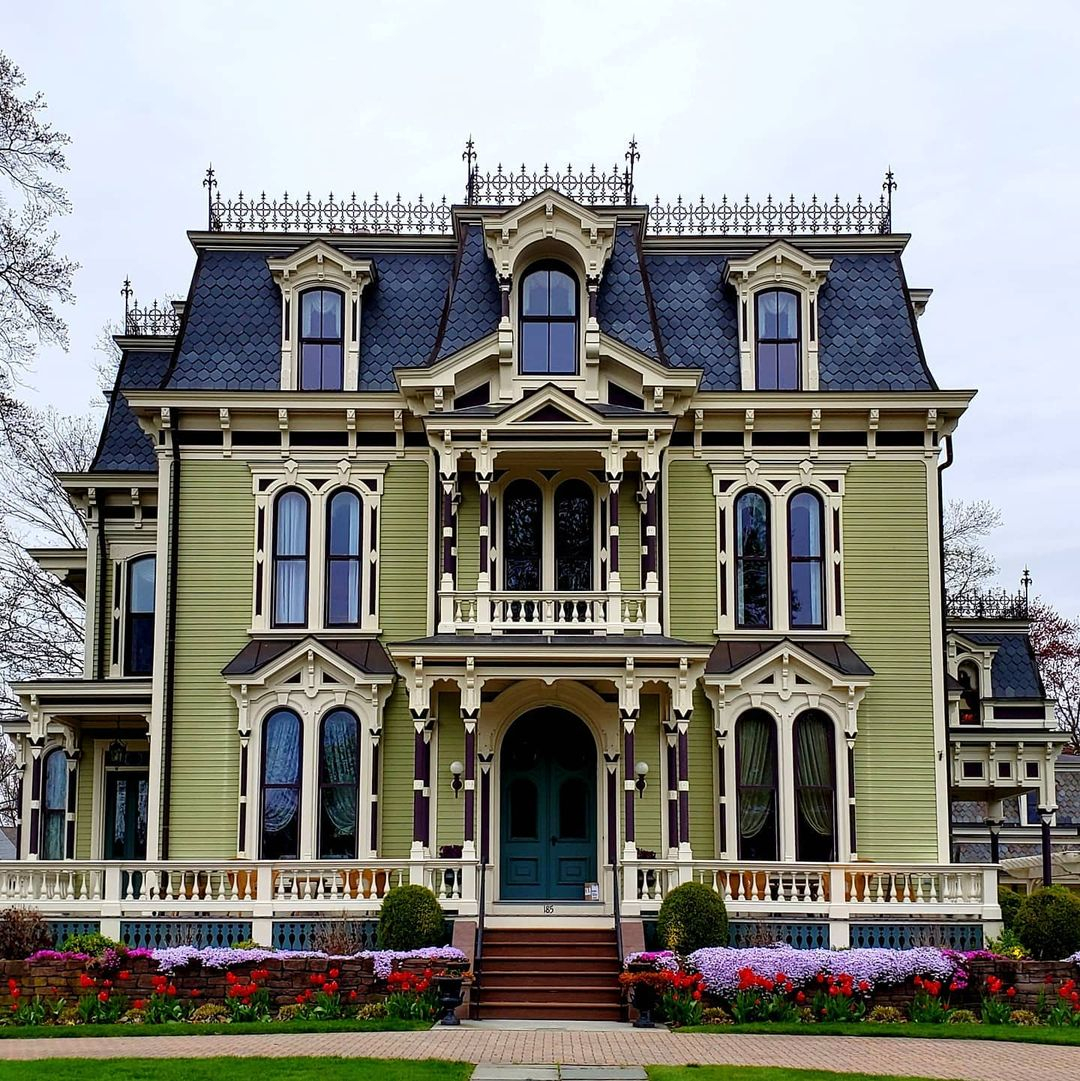
Mansard roofs were popular in European times. This design has four double beveled edges that meet to form a flat area or low-pitched ridge in the center. Using pale green on this wall offers a fresh exterior look. Mansard Roof Style from @rollycof
Flat Roof Style
Flat roofs are commonly associated with contemporary-style houses and are usually not visible from the street. These roofs necessitate the use of durable roofing materials since they are prone to damage due to exposure to the elements. While aesthetics may not be a significant consideration, it’s important to ensure that water rapidly drains off the slight slope. If you reside in a region with cold weather, it’s essential to select roofing materials that can withstand a considerable amount of snow.

If you live in an area with cold weather, it’s important to choose a roofing material that can withstand a lot of snow. Flat roofs are usually not visible from the road but require strong roofing materials. This roof will last a long time as it is susceptible to damage from exposure to the elements. Flat Roof from @build.official_
Dutch Colonial Roof Design
Dutch Colonial houses are commonly identified by their gambrel roofs, which have steeply sloping sides. Typically, this type of roof covers a significant portion of two exterior sides of a home’s second floor, making the selection of roofing material and color highly visible from the street. Wood shingles and shakes are appealing natural options for roofing materials, but it’s important to check if they have been treated with fire-retardant chemicals. If not, it may be wise to consider synthetic alternatives like laminated composition shingles, which offer a similar shake-like appearance.
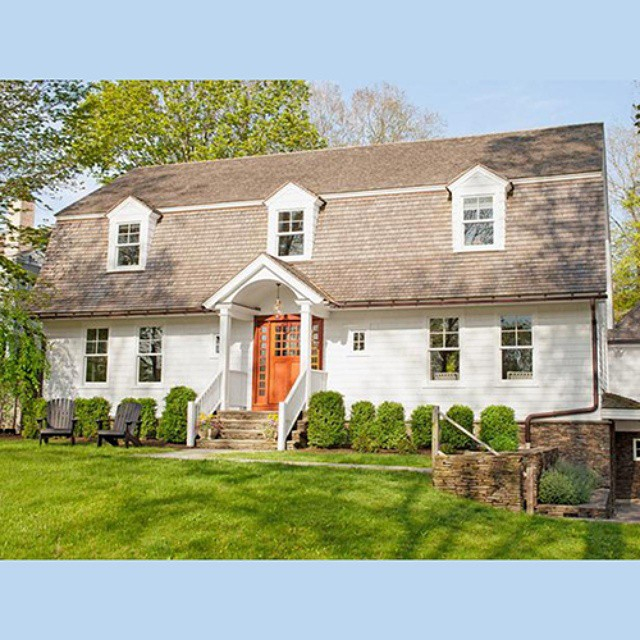
The gambrel roof with sloping roof sides is characteristic of Dutch Colonial houses. This type of roof often covers most of the two outer sides of the second floor of a house, which makes the roofing material and choice of color highly visible from the roadside. Dutch Colonial Roof Design from @theorientksa
Skillion Roof Style
A skillion roof, also known as a lean-to roof, is characterized by a single sloping direction, resulting in a roof shape with striking angles. It can be used for specific sections of a roof or across an entire house to create a daring and modern exterior. Skillion roofs may also incorporate multiple angles in different parts of the roof to create a more dynamic appearance. The steep pitch of this type of roof allows for rapid runoff, making it well-suited for regions that experience heavy rainfall or snowfall.
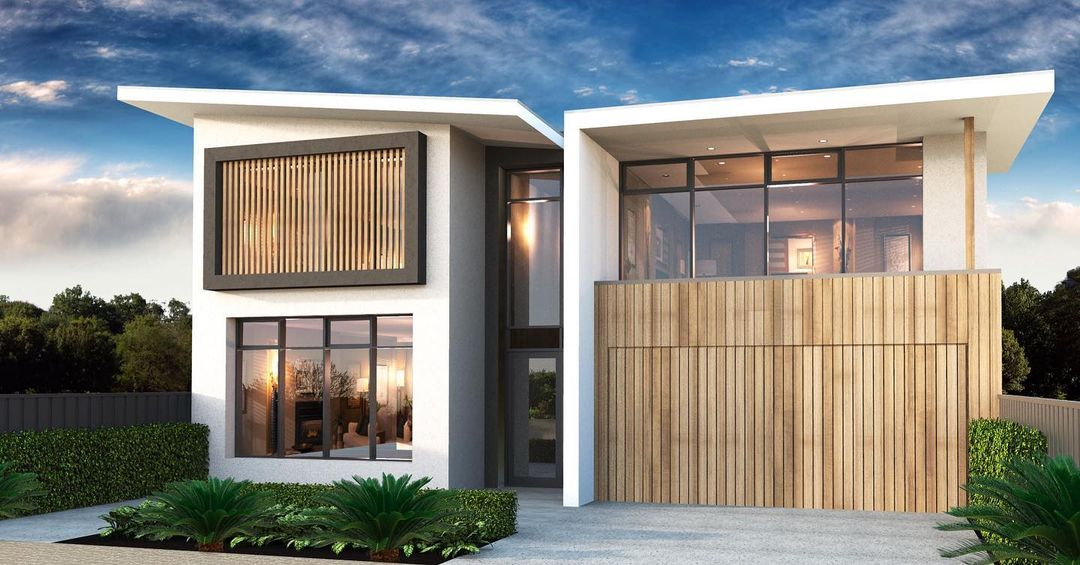
This type of roof works well in areas that receive heavy rain or snowfall because the steep slope allows for the rapid flow of water. Skill roofs can also combine several angles on different parts of the roof to create a more dynamic appearance. Skillion Roof Style from @allurahomes
Clay Tile Roof
Tile roofs, with their striking colors and textures, are impossible to ignore. They are frequently utilized on homes with a Spanish or Mediterranean architectural style, and they are particularly popular in the Southwestern United States because they deflect sunlight away from the house, keeping the interior cool. Although this type of roofing material is expensive, it is known for its durability. The warm color scheme and textures of the tile roof complement the stucco exterior of this house.
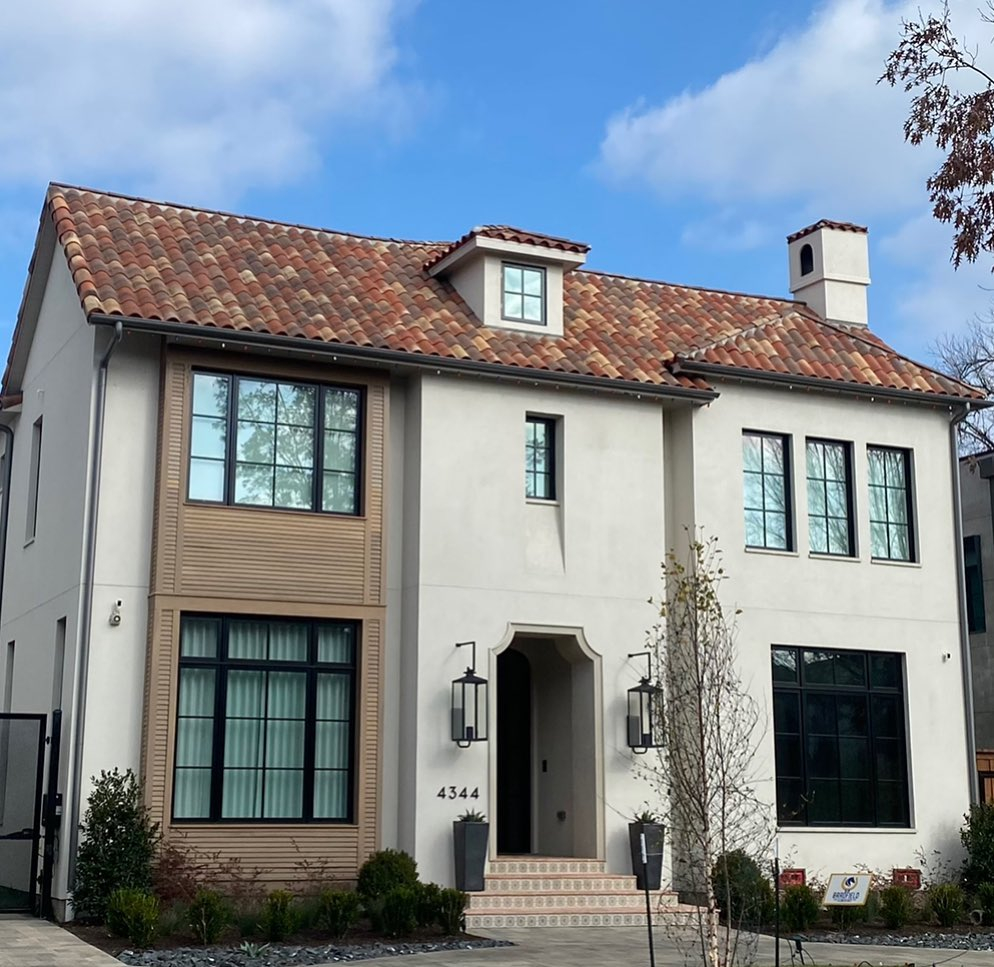
The bold color and texture of the tiles catches the eye. This clay roofing material, although expensive, will last a long time. The stucco exterior of this home complements the warm color scheme and texture of the tiled roof. Clay Tile Roof from @rooftileandslatecompany
Metal Roof Styles
Roofing materials like aluminum, steel, or copper can be used to make metal roofs. While metal roofs are long-lasting, lightweight, and fire-resistant, they have a tendency to conduct heat and create noise. The use of a metal roof has a significant impact on the appearance of this three-story clapboard cottage. The striking red color complements the all-white exterior and the green surroundings, resulting in an attractive color palette.

Metal roofs can be made of aluminum, steel, or copper. It is durable, but it can conduct heat and cause noise. The black color on this roof will beautify the exterior of the house. Metal Roof Styles from @destryandshelley
Slate Roof Materials
Slate is a sophisticated and appealing roofing material that can suit homes of various styles. Nonetheless, it can be expensive to both install and upkeep. If you appreciate the appearance of slate roofs but not their cost, composite materials offer a viable alternative. These materials are made of slate and resins, and provide the same visual appeal as natural slate, while being more straightforward to install and maintain.
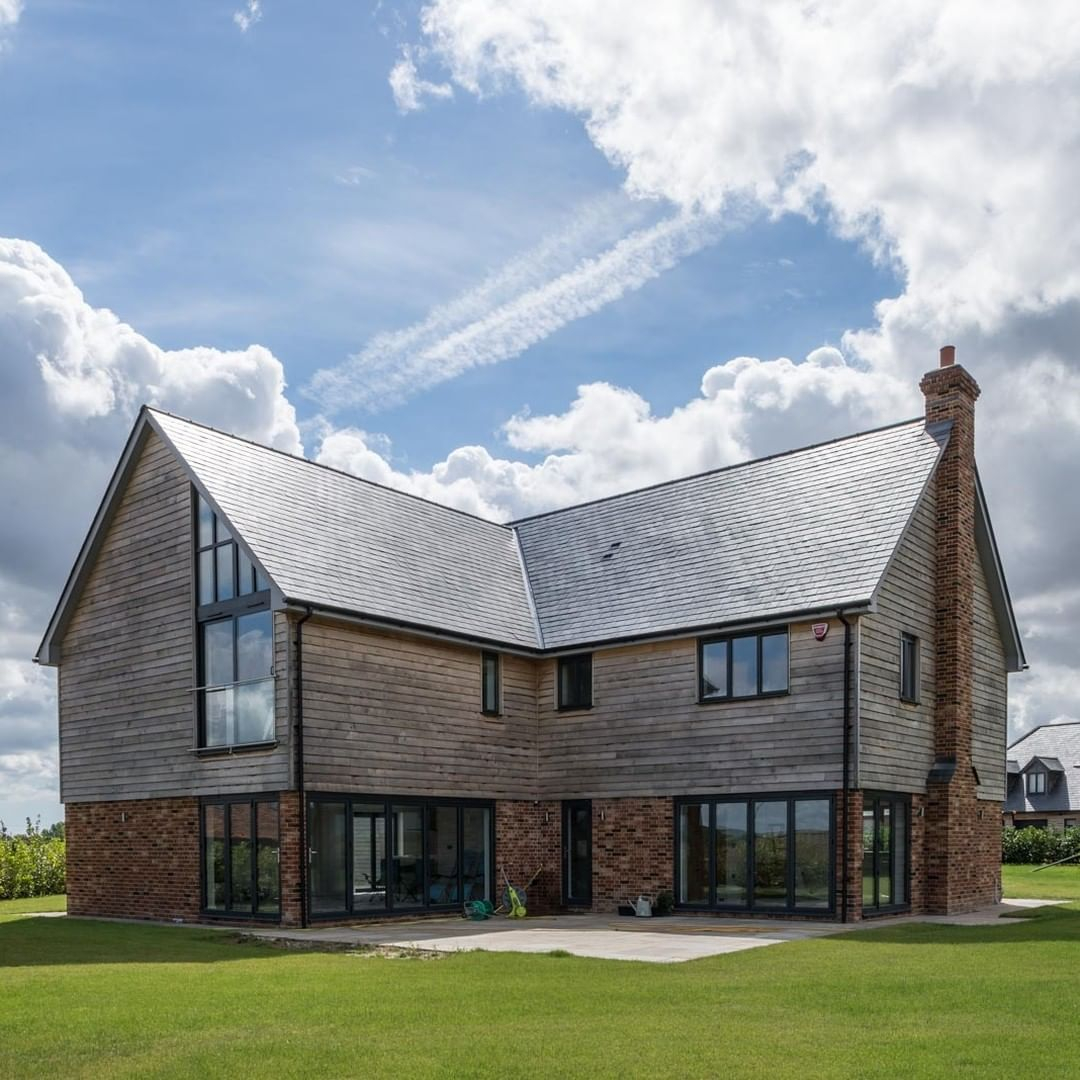
Slate roof looks elegant and attractive. This material is made of slate and resin, and provides the same visual appeal as natural stone, but is easier to install and maintain. Slate Roof from @cupa.pizarras
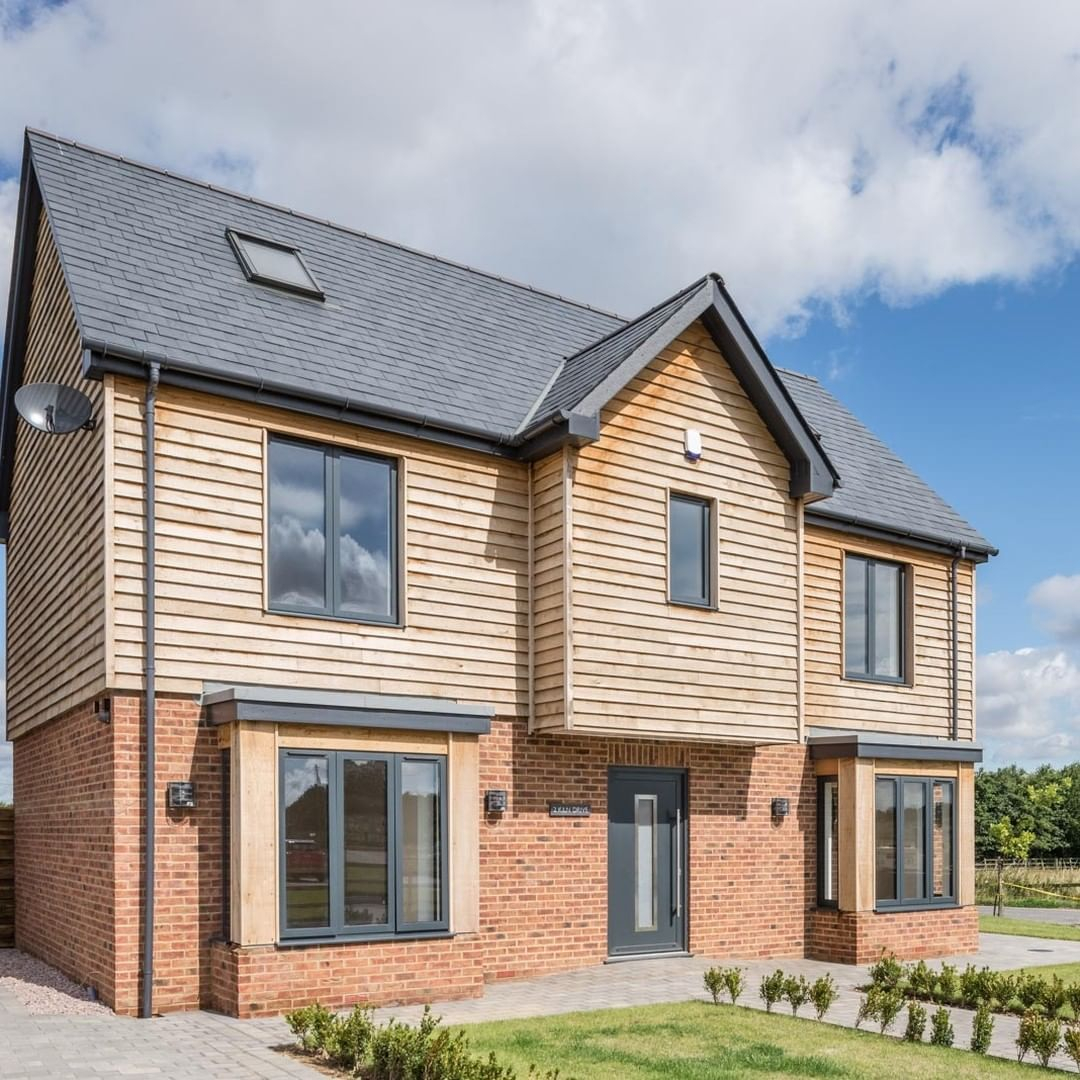
The slate material on this roof will last a long time and is easy to maintain. This type of roof brings all the good looks of natural slate with easier installation and maintenance.Natural Slate Roof from @cupa.pizarras
In order to enhance the visual appeal of a structure, architects often blend multiple roof styles into their designs. It’s not uncommon to use multiple roofing materials on a house too, especially if the roof design incorporates several elements with unique features.


